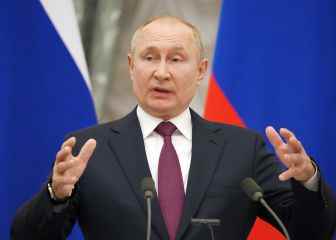The year was 1998. In the European Union still the euro had not been implemented and Vladimir Putin was still a minor player in Russian politics. Barely a decade earlier, the country had gone from having a communist economy to a capitalist economy and depended on the export of raw materials, especially to Asian economies.
The Asian crisis of 1997, the beginning of the problems for Russia
In 1997, there was a financial crisis in countries such as Thailand, Malaysia, Indonesia and the Philippines, among others. A critical moment in the economy of these countries that fully affected Russia. The Federation, led by Boris Yeltsin, relied on exports of raw materials such as oil, natural gas, metals, and timber. These commidities accounted for 80% of its exports.
This fact produced a increase in the country’s deficit and debtwhich added to the problem of taxes of large companies and corporations emerged after the end of the Soviet Union, which barely paid taxes to the State. To alleviate this situation, the Government increased the yield of the country’s short bonds, the GKOin exchange for a higher debt payment by the State.
The The International Monetary Fund (IMF) and the World Bank (WB) approved a first aid package for Russia for a total of 22,600 million dollars. However, unpaid wages began and the coal miners went on strike in May 1998. The Government maintained its strategy of maintaining the exchange rate ruble/dollar in a narrow band at the expense of even spending its foreign reserves to maintain the Russian currency.
August 17, 1998, the key date
On August 17, 1998, given the impossibility of paying the debt, the Government and the Central Bank of Russia announced the suspension of payments for 90 days to non-residents and canceled operations with short-term government bonds (GKO, for its acronym in Russian) that were due before December 31, 1999.
In September 1998, the exchange rate was 21 rubles for one US dollar: had lost two-thirds of its value in just one month. The Russian economy recovered from the ‘Vodka Effect’, as this debt crisis was also known, thanks to the gradual rise in oil prices.
The financial situation of Russia in 2022
According JP Morgan data collected by El Economista, the Russian economy is expected to contract 7% in GDP by 2022, while Bloomberg Economics forecasts a drop of around 9%. Russia shrank 5.3% in 1998 during the debt crisis that shook the foundations of its economy. For this March 5 (latest data available at the date of publication of this news) the exchange rate is 124 rubles for each US dollar.
